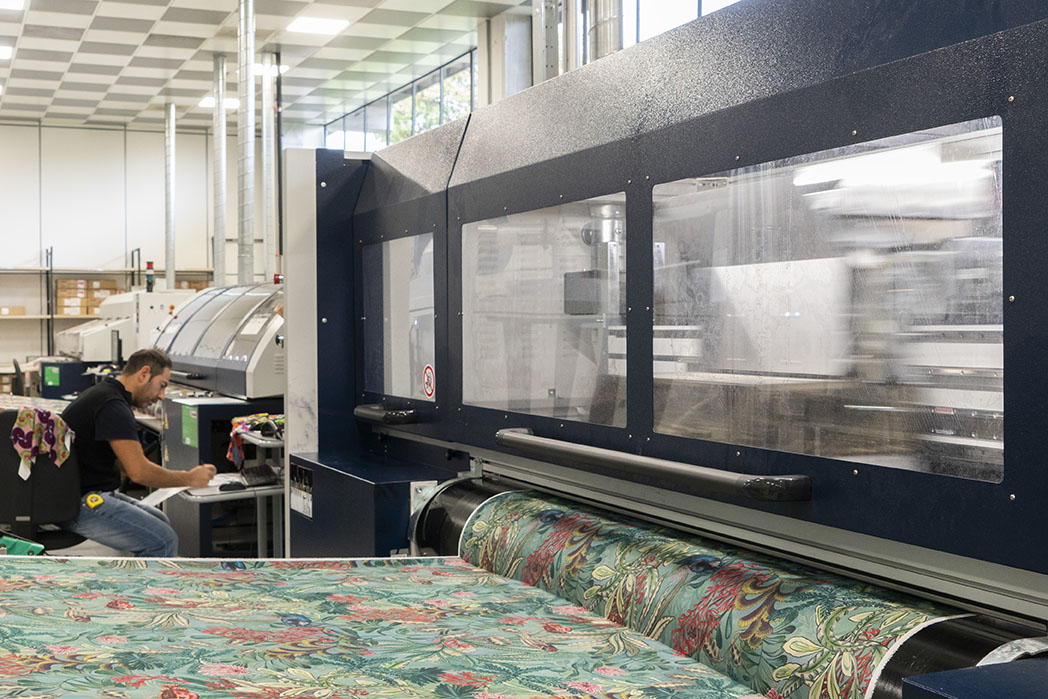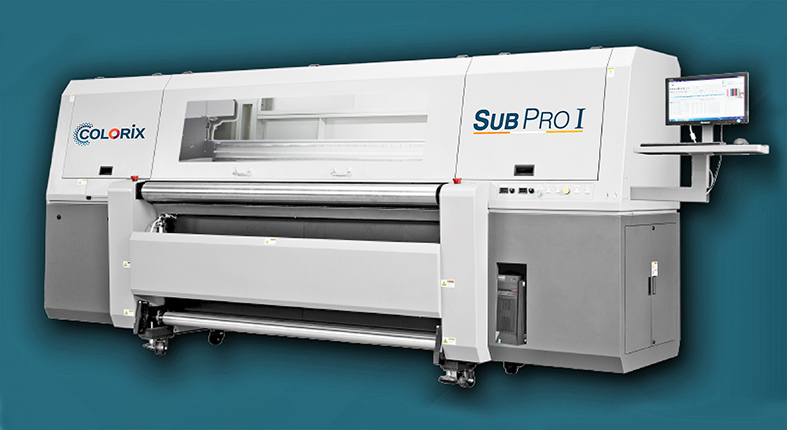HP India, in the wake of the launch of its new printers for the textile industry, is betting big on this sector considering the opportunities for innovation and the fact that the Indian textile industry at $150 billion per annum contributes up to 2% of the country’s GDP

Adapting to a changing environment is the key to survival and growth, and this applies equally to humans and businesses. In this scenario, large-scale markets like the textile industry are flourishing with opportunities and events, waiting to be discovered by a business that is ever adapting. As such, HP India saw a clear opportunity in the textile category and is now reinventing it altogether. A market leader in the digital printing segment, HP Inc., the parent company, has been catering and fulfilling the demands of the growing textile industry with innovative and futuristic products.
Speaking to Vitesh Sharma, Head of Sign and Graphics at HP India, we gained insights into the company’s strategy in making headway in the textile industry as well as the new plans they have in store to address emerging opportunities in this sector.
According to Sharma, the reinvention of dye sublimation is a pioneering step that HP India is taking for the textile industry while also working towards transforming the market outlook with the help of its technology knowhow. As part of this strategy, the company launched its new textile printing portfolio at Gartex Texprocess India this year, hosted at New Delhi in August. The printing products are part of their dye sublimation textile printers’ range. The Stitch S series has two main inkjet printers, the S500 and S1000. These printers address the recurring challenge of inconsistency in matching of colours across different units, which is specific to the textile industry. The printers, the company claims, will deliver fast, precise colour-matching, along with efficient and simplified printing processes, designed to accelerate commercial digital print adoption.
With HP India’s new line of printers, the probability of colours remaining consistent and matching across different units is much higher, thus being true to the company’s tagline: ‘passes colour matching, everywhere’. The mechanics of these products are indeed commendable. The HP Stitch S500 is a 5 feet wide machine that has been specifically designed for high production units. It comes with the ability to enable predictable dye sublimation colour and substantially reduces media waste. The printer allows users to access a single pass mode, thereby achieving top speed. It is also designed for cost-saving since it reduces floor space utilisation by about 50% due to its frontal media loading and spindle-less system.

Its key features include the automatic detection built-in sensor that provides an alert when the colour runs out and HP’s tension-sensing winder that allows the machine to run overnight without constant supervision. The S1000 is a 10 feet wide machine that produces high-quality prints in the richest possible range of colours. Its high-speed printing directly prints on the fabric using a ‘drop and dry’ system. It has an easy system of operation and does not need constant human supervision. Its smart nozzle compensation and optical media advance sensor provide rich and reliable image quality. Even with changes in the work environment, the colour accuracy manages to withstand hurdles over time, delivering top quality, consistency, and matching of colours.
The devices are the fastest when it comes to colour matching and this is due to the cloud-based operating system that has been strategically built into each machine. This system then works together with the spectrophoto meter, a technology that allows users to upload a profile of their choice that can then be used in any of their manufacturing units, regardless of the location. This means that the users will get the same colour each time. For large, high-end brands like Zara, something like this is extremely important as it has multiple manufacturing locations. Therefore, with such precision products, the garments printed at widely distributed locations will still have exactly the same design and feel.
Additionally, the print heads used in these printers are unique to the market. For the first time in the industry, accessing thermal printing technology for dye sublimation has now been made possible. This sort of technology has been deployed previously for paper, but not textile. This is, in fact, a crucial component since the usage of such machines in the textile sector is very extensive. The performance and quality of these print heads tend to be compromised with everyday use. The performance of the first batch printed and the batch printed three months later is thus clearly visible and not commercially acceptable. With HP India’s print heads, however, the company claims that users will not have to worry about such problems anymore.
“Each time you replace the print head, the performance of the machine is as good as new,” Sharma says. Another addition to these unique features is the limited incorporation of service products in the printers of the Stitch S series. This way, a proactive and efficient use of the printers is guaranteed. Meanwhile, innovative technology, while important, is not the only factor that can drive any business ahead, especially in the textile industry. Dye sublimation is a process known for its heavy usage of water. Sustainability is therefore a crucial element and HP India seems to already have a head-start in this area. “HP India is one of the few companies to be awarded the highest form of certification for its eco-friendly products,” Sharma says.
These include the Green Guard and ECOLOGO® certifications. The water-based ink used by HP India’s printers is safe for the environment and is also odourless and non-flammable. It also does not consist of any hazardous substances. Switching over to a discussion about the current slowdown in the textile sector and how HP India is managing to adapt to this change, Sharma says that the company has always maintained a positive outlook. “The textile industry caters to our basic need for clothing and therefore it definitely will bounce back once the economy settles down. The growth of textile printing will not get impacted due to the current slowdown,” he adds. HP India’s primary focus is to make strong inroads into the printing segment of the textile industry. “There is much scope for us to make a mark because printing is still being done in a traditional manner. This is where we come into the picture with our innovative technologies. The company is globally a leader across most categories it operates in and has always been very focused about being a leader in every market it operates in. This will drive our strategies for the textile industry too,” Sharma says. The company has partnered with leading companies in the dye sublimation industry – from RIP vendors to thermo-processing manufacturers – to provide customers with a holistic workflow solution that integrates seamlessly with HP Stitch. “The new HP Stitch printers will redefine the dye sublimation printing market and pave the way for more digital print transformations in the future”, Sharma states.






I¦ve recently started a site, the info you provide on this site has helped me tremendously. Thank you for all of your time & work.
Hi, I think your site might be having browser compatibility issues. When I look at your blog in Chrome, it looks fine but when opening in Internet Explorer, it has some overlapping. I just wanted to give you a quick heads up! Other then that, superb blog!